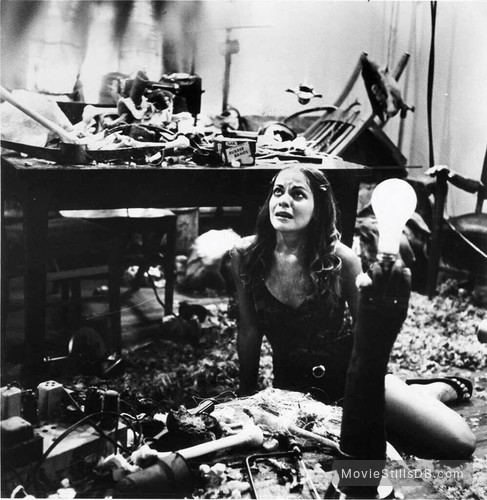

On one level of craftsmanship, 'Texas Chainsaw' would seem to be a mess. It accomplishes that with astonishing fidelity. As directed by Tobe Hooper and shot by cinematographer Daniel Pearl, the film aims only to reproduce the structure and syntax of a nightmare. The point of 'Texas Chainsaw' is hardly its plot. What follows is about as gruesome and blood-soaked as you can imagine. Stumbling upon a seemingly deserted farmhouse, the kids discover it's really the home of the hitchhiker's even nuttier clan, led by demented patriarch Sawyer and his obese, chainsaw wielding brother Leatherface (Gunnar Hansen). The van of kids promptly kicks him out, but that's only the beginning of the fun. After stopping by a particularly creepy gas station to ask for directions, they pick up a crazy hitchhiker (Edwin Neal) who regales them with tales of the local slaughterhouse, and, in a charming precursor of the horrors to come, slices himself with a razor blade. A group of five friends is making a trip through Texas in search of the grave of a relative.

The story is likely familiar to most, and if not, it will likely seem completely generic because it's been ripped-off by just about every slasher film of the past three-and-a-half decades. But perhaps that's besides the point these days - the film exists in our memory banks as a collective nightmare, with images that still hold enough raw visceral power to shock thirty-five years after its original creation. Whether of not that makes 'The Texas Chainsaw Massacre' a legitimately good film is another matter. Just mention the words of the title to someone, and even if they've never seen the film, they'll know exactly what you're talking about. The very definition of '70s grindhouse horror, ' The Texas Chainsaw Massacre' is not only a classic of the genre, but a piece of our shared cultural lexicon.


 0 kommentar(er)
0 kommentar(er)
